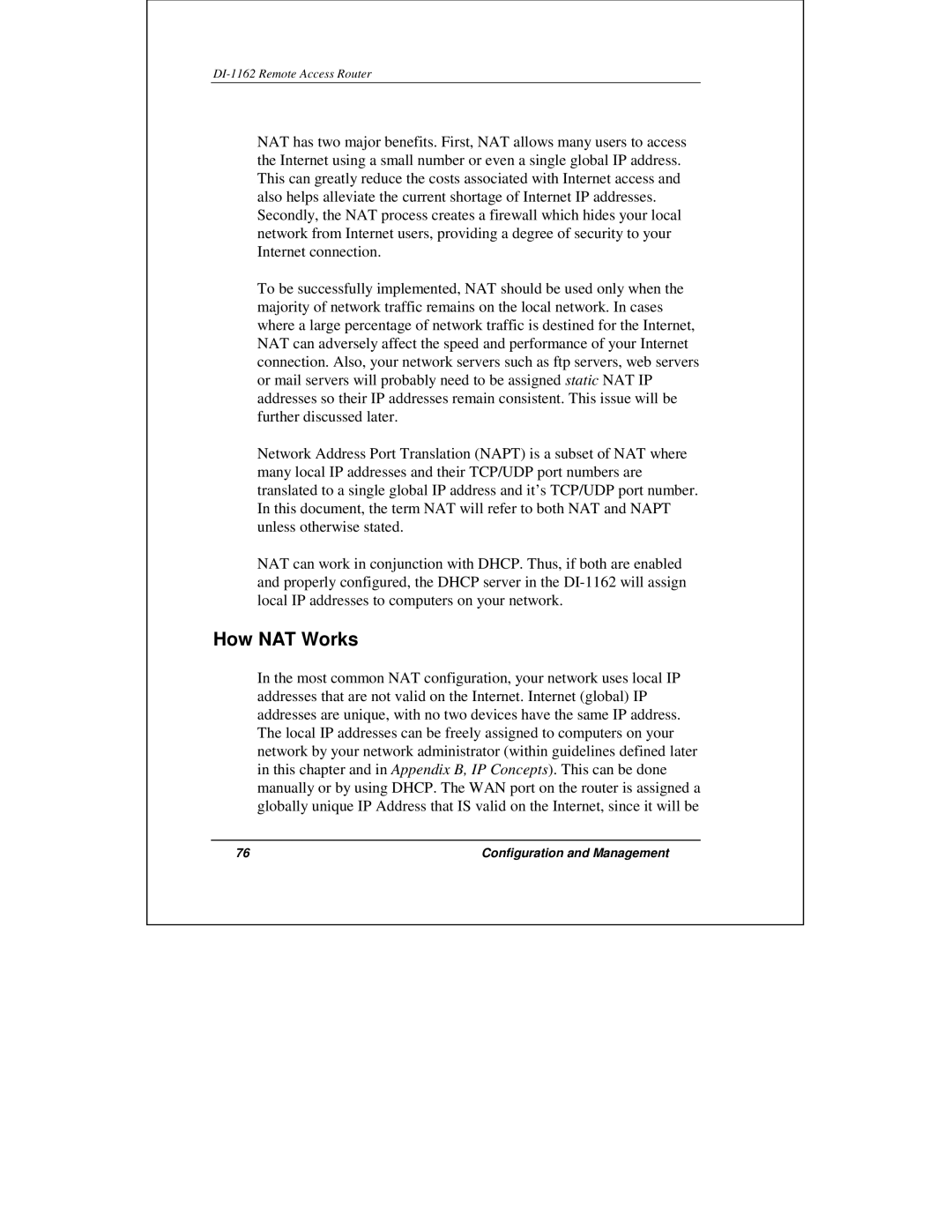
DI-1162 Remote Access Router
NAT has two major benefits. First, NAT allows many users to access the Internet using a small number or even a single global IP address. This can greatly reduce the costs associated with Internet access and also helps alleviate the current shortage of Internet IP addresses.
Secondly, the NAT process creates a firewall which hides your local network from Internet users, providing a degree of security to your Internet connection.
To be successfully implemented, NAT should be used only when the majority of network traffic remains on the local network. In cases where a large percentage of network traffic is destined for the Internet, NAT can adversely affect the speed and performance of your Internet connection. Also, your network servers such as ftp servers, web servers or mail servers will probably need to be assigned static NAT IP addresses so their IP addresses remain consistent. This issue will be further discussed later.
Network Address Port Translation (NAPT) is a subset of NAT where many local IP addresses and their TCP/UDP port numbers are translated to a single global IP address and it’s TCP/UDP port number. In this document, the term NAT will refer to both NAT and NAPT unless otherwise stated.
NAT can work in conjunction with DHCP. Thus, if both are enabled and properly configured, the DHCP server in the
How NAT Works
In the most common NAT configuration, your network uses local IP addresses that are not valid on the Internet. Internet (global) IP addresses are unique, with no two devices have the same IP address. The local IP addresses can be freely assigned to computers on your network by your network administrator (within guidelines defined later in this chapter and in Appendix B, IP Concepts). This can be done manually or by using DHCP. The WAN port on the router is assigned a globally unique IP Address that IS valid on the Internet, since it will be
76 | Configuration and Management |
